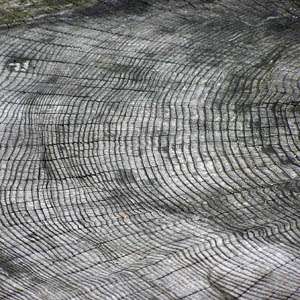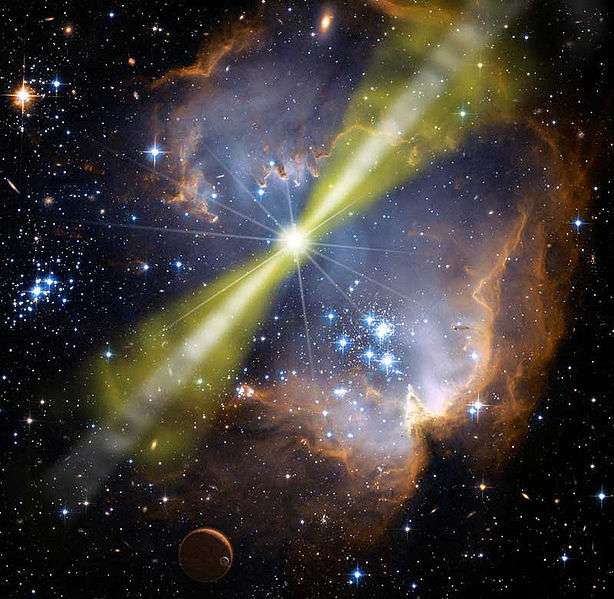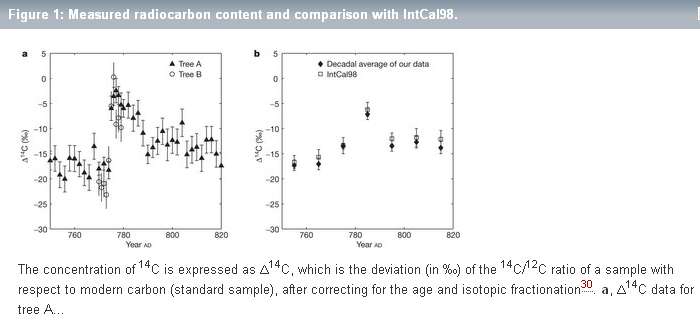It looks like you're using an Ad Blocker.
Please white-list or disable AboveTopSecret.com in your ad-blocking tool.
Thank you.
Some features of ATS will be disabled while you continue to use an ad-blocker.
11
share:
The scientist Japanese team of Nagoya University said that it can't have been caused neither by any solar flare nor by a supernova explosion...

In tree rings, Japanese scientists find 8th-century mystery

Lebanon Cedar
Read the whole article here
Could it be the extremely rare Gamma-ray burst?

Artist's illustration of a bright gamma-ray burst occurring in a star-forming region. Energy from the explosion is beamed into two narrow, oppositely directed jets.

In tree rings, Japanese scientists find 8th-century mystery
In the late eighth century, Earth was hit by a mystery blast of cosmic rays, according to a Japanese study that found a relic of the powerful event in cedar trees.
Analysis of two ancient trees found a surge in carbon-14 -- a carbon isotope that derives from cosmic radiation -- which occurred just in AD 774 and AD 775, the team report in the journal Nature on Sunday.
Earth is battered by protons and other sub-atomic particles which are blasted across space by high-energy sources.
The particles collide with the stratosphere and react with nitrogen to create carbon-14, which is then absorbed into the biosphere.

Lebanon Cedar
"With our present knowledge, we cannot specify the cause of this event," Miyake admits.
"However, we can say that an extremely energetic event occurred around our space environment in AD 775 ... (but) neither a solar flare nor a local supernova is likely to have been responsible."
Read the whole article here
Could it be the extremely rare Gamma-ray burst?

Artist's illustration of a bright gamma-ray burst occurring in a star-forming region. Energy from the explosion is beamed into two narrow, oppositely directed jets.
edit on 4-6-2012 by elevenaugust because: (no reason given)
reply to post by elevenaugust
I think a Gama ray burst can wipe out all organic and chemical life for about 200 light years. So if it was, then it was far away. Interesting. Betelgeuse could go nova or gama burst quite soon in the grand cosmic scale. Any time between now and a couple of 100,000 years. It might even have happened allready because light takes so long to reach our neck of the woods.
I think a Gama ray burst can wipe out all organic and chemical life for about 200 light years. So if it was, then it was far away. Interesting. Betelgeuse could go nova or gama burst quite soon in the grand cosmic scale. Any time between now and a couple of 100,000 years. It might even have happened allready because light takes so long to reach our neck of the woods.
edit on 4-6-2012 by andy06shake because: (no reason
given)
The way the tree is standing looks really cool and beautiful. Almost like a tilt in the last picture.
reply to post by elevenaugust
Wonder if there are other tell tale signs of this event elsewhere in the world, at least half the planet would have been facing it when it occurred...
Also, I think they may be dismissing it being caused by a solar flare too easily, since they say it would have had to be bigger than anything ever recorded...unless the flare needed to do this is unrealisticly large.
Wonder if there are other tell tale signs of this event elsewhere in the world, at least half the planet would have been facing it when it occurred...
Also, I think they may be dismissing it being caused by a solar flare too easily, since they say it would have had to be bigger than anything ever recorded...unless the flare needed to do this is unrealisticly large.
edit on 4/6/12 by Chadwickus because: (no reason given)
Originally posted by Chadwickus
reply to post by elevenaugust
Wonder if there are other tell tale signs of this event elsewhere in the world, at least half the planet would have been facing it when it occurred...
Also, I think they may be dismissing it being caused by a solar flare too easily, since they say it would have had to be bigger than anything ever recorded...unless the flare needed to do this is unrealisticly large.
edit on 4/6/12 by Chadwickus because: (no reason given)
Yes, in the original Nature paper they said that it would have had to be about 20 times more than the normal rate of variation. I don't know if it's consistent with what we know about max radiations coming from solar flares.
Anyway, Daniel Baker, a space physicist at the University of Colorado's Laboratory for Atmospheric and Space Physics in Boulder, Colorado confirmed what you says above indeed:
Baker, however, thinks that Miyake's team may have been too quick to rule out a solar flare. Flares are sometimes associated with coronal mass ejections (CMEs) — huge eruptions of magnetically charged plasma from the Sun's atmosphere that send streams of charged particles towards Earth. It might be possible, he says, for CMEs to be accompanied by conditions in which an unusual number of protons are accelerated to super-high energies, even without the flare itself being "ridiculously strong".
"We know much more these days about how important proton acceleration is at the shock fronts that precede CME structures as they propagate towards Earth," Baker says. "I would like to think about whether a strong CME moving directly towards Earth could have produced the intense proton population that impacted Earth's atmosphere."

extract from the complete study from here
On the comments sections, the death of Romuldus of Dublin in 775 and the historical report of his life and the events that surrounded it is interesting:
However, when the darkness of night set in, a mysterious flame of light was seen to hover above the spot, which attracted the notice of some fishermen. Night after night the light appeared at the same part of the river.
Source
Could it be the sign of an unusual Northern light?
edit on 4-6-2012 by elevenaugust because: (no reason given)
reply to post by elevenaugust
This event was recorded (with not much information or speculation) in the Anglo Saxon Chronicles
Can solar flares or gamma rays appear as a red cross (or any other shape) in the sky? How would it have looked during daytime hours?
This event was recorded (with not much information or speculation) in the Anglo Saxon Chronicles
A.D. 774. This year the Northumbrians banished their king,
Alred, from York at Easter-tide; and chose Ethelred, the son of
Mull, for their lord, who reigned four winters. This year also
appeared in the heavens a red crucifix, after sunset; the
Mercians and the men of Kent fought at Otford; and wonderful
serpents were seen in the land of the South-Saxons.
omacl.org...
Can solar flares or gamma rays appear as a red cross (or any other shape) in the sky? How would it have looked during daytime hours?
edit on 6/6/2012 by teapot because: format
new topics
-
University student disciplined after saying veganism is wrong and gender fluidity is stupid
Education and Media: 31 minutes ago -
Geddy Lee in Conversation with Alex Lifeson - My Effin’ Life
People: 1 hours ago -
God lived as a Devil Dog.
Short Stories: 1 hours ago -
Police clash with St George’s Day protesters at central London rally
Breaking Alternative News: 3 hours ago -
TLDR post about ATS and why I love it and hope we all stay together somewhere
General Chit Chat: 4 hours ago -
Hate makes for strange bedfellows
US Political Madness: 6 hours ago -
Who guards the guards
US Political Madness: 9 hours ago -
Has Tesla manipulated data logs to cover up auto pilot crash?
Automotive Discussion: 10 hours ago
top topics
-
Hate makes for strange bedfellows
US Political Madness: 6 hours ago, 14 flags -
whistleblower Captain Bill Uhouse on the Kingman UFO recovery
Aliens and UFOs: 15 hours ago, 11 flags -
Who guards the guards
US Political Madness: 9 hours ago, 10 flags -
TLDR post about ATS and why I love it and hope we all stay together somewhere
General Chit Chat: 4 hours ago, 4 flags -
Police clash with St George’s Day protesters at central London rally
Breaking Alternative News: 3 hours ago, 3 flags -
Has Tesla manipulated data logs to cover up auto pilot crash?
Automotive Discussion: 10 hours ago, 2 flags -
God lived as a Devil Dog.
Short Stories: 1 hours ago, 2 flags -
Geddy Lee in Conversation with Alex Lifeson - My Effin’ Life
People: 1 hours ago, 2 flags -
University student disciplined after saying veganism is wrong and gender fluidity is stupid
Education and Media: 31 minutes ago, 2 flags
11
